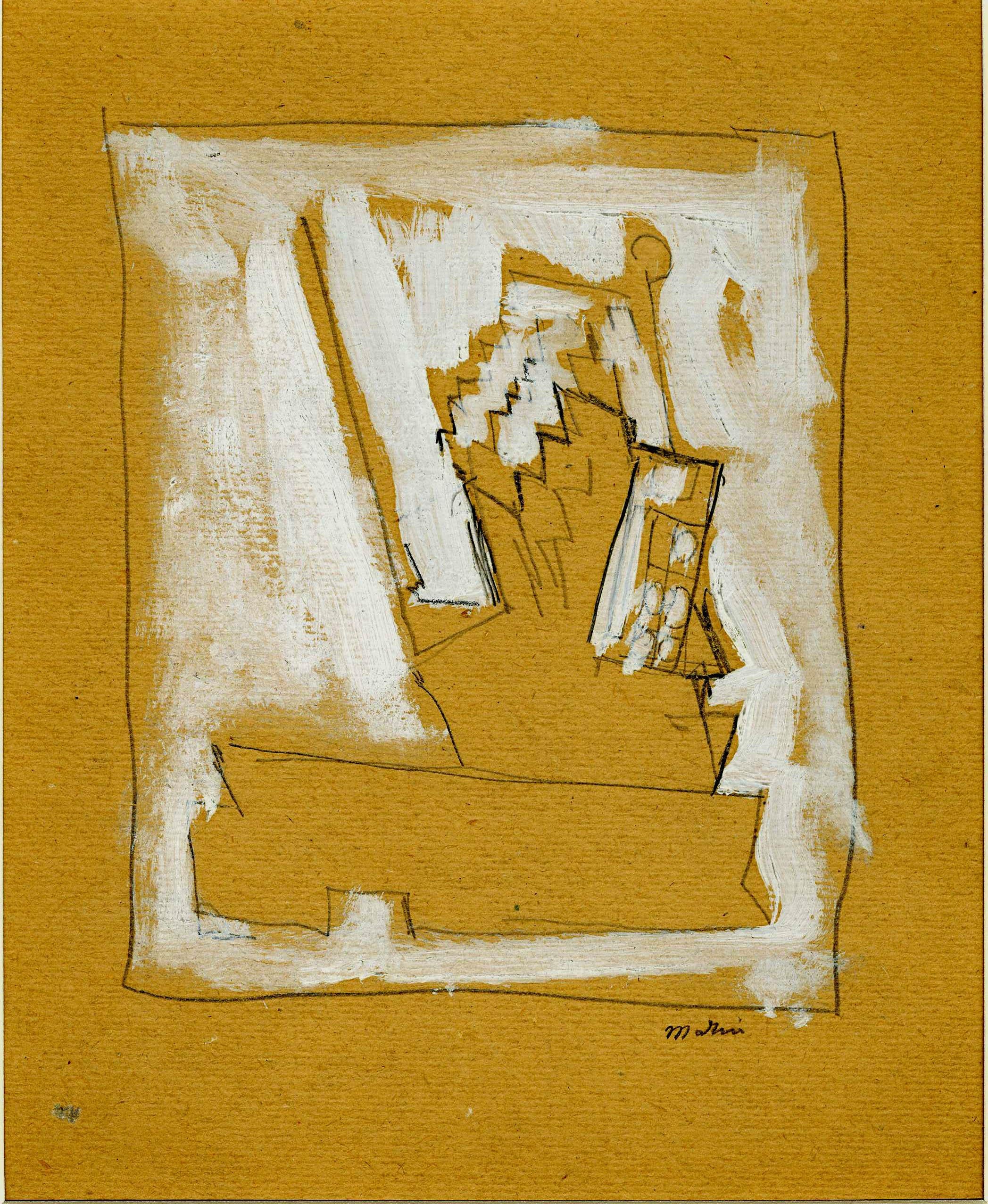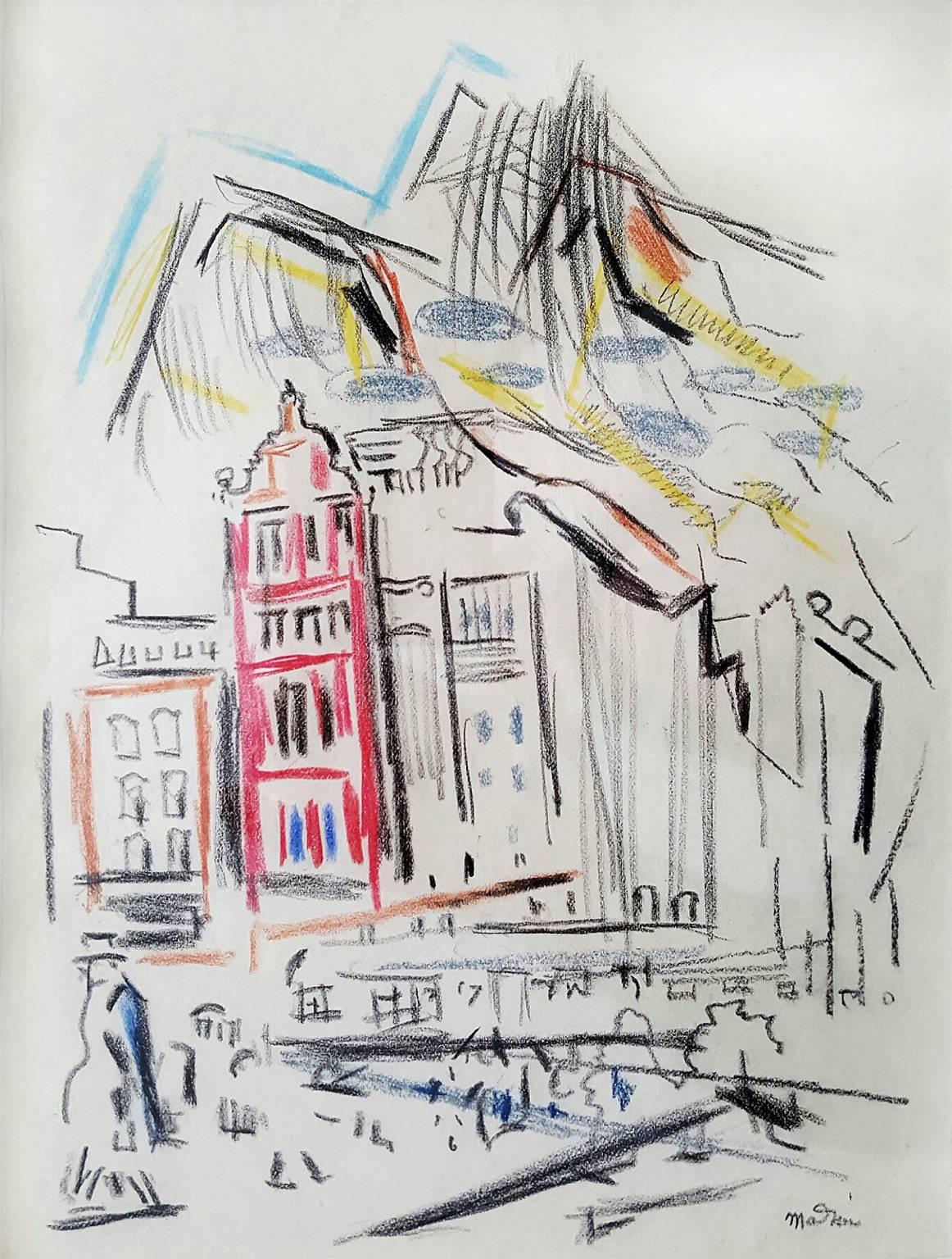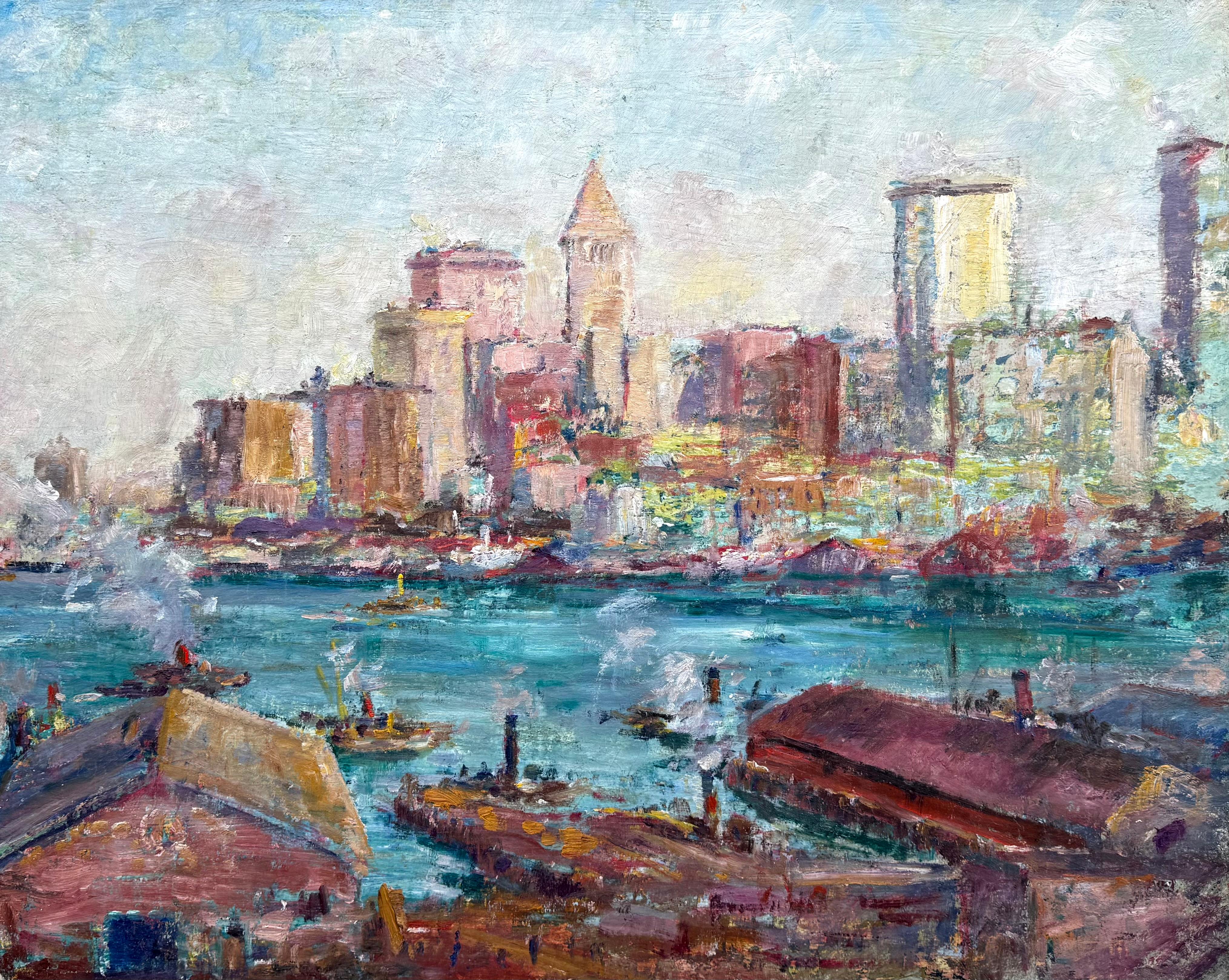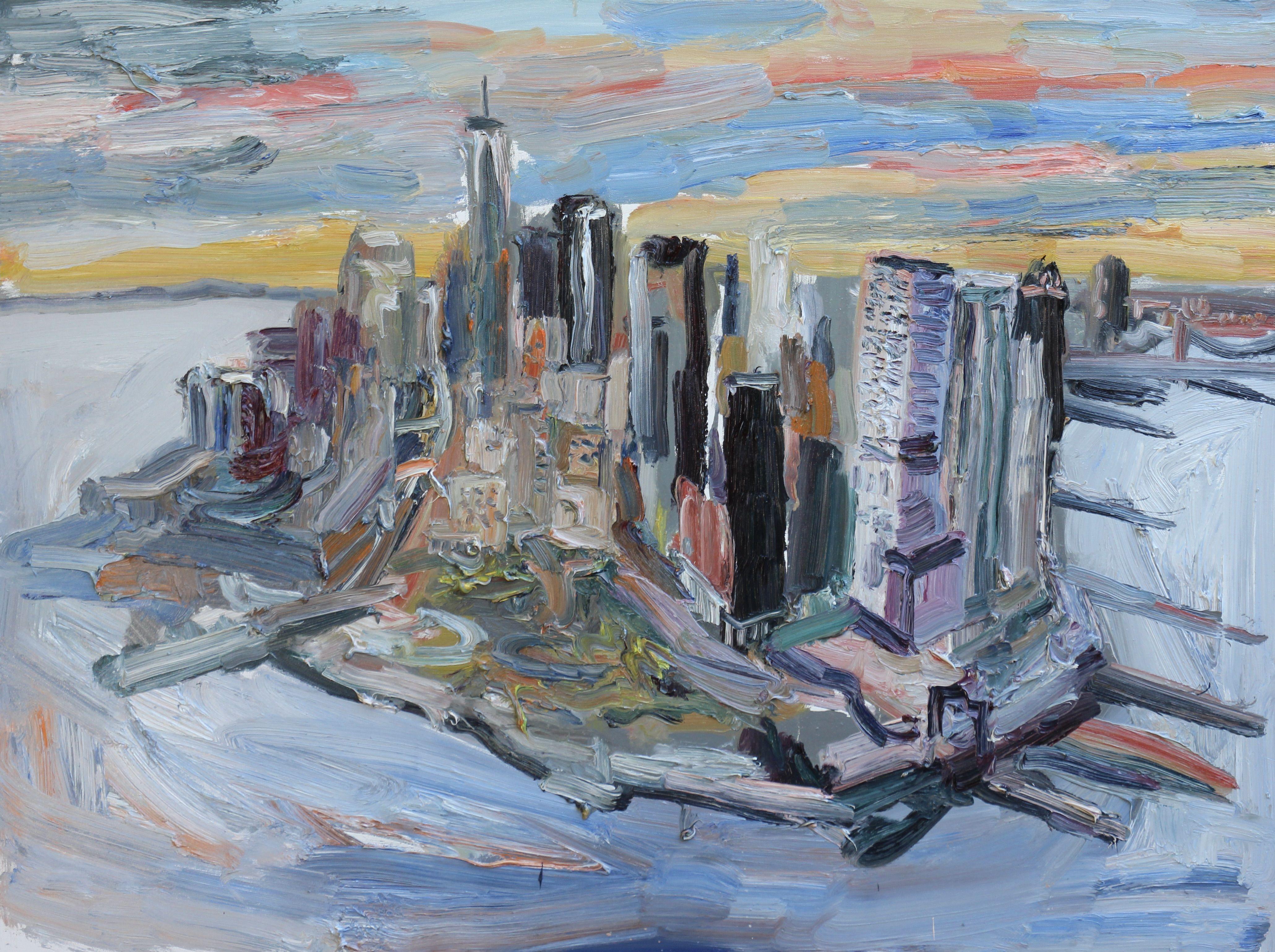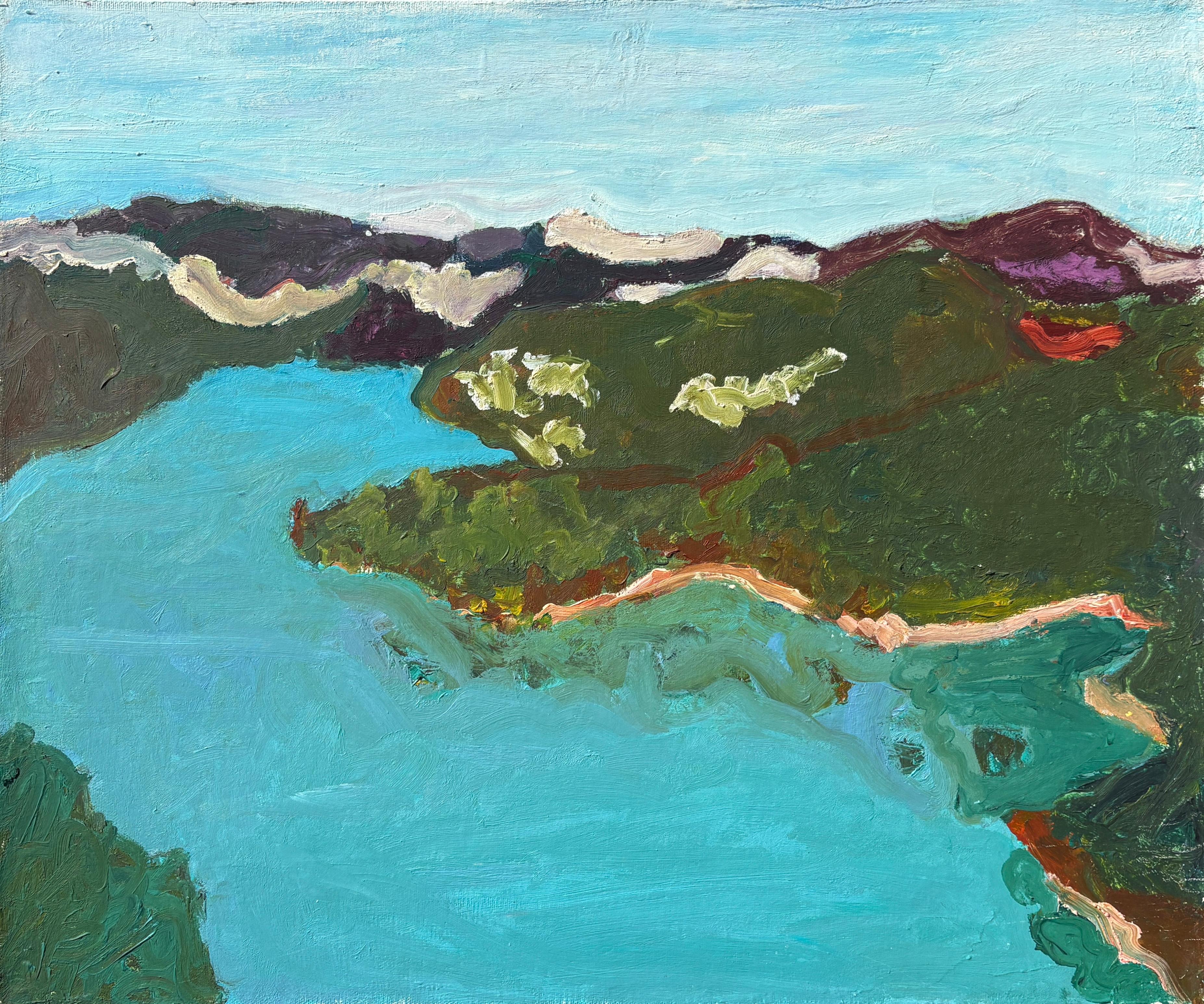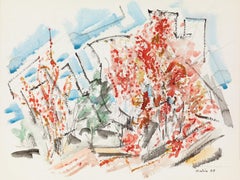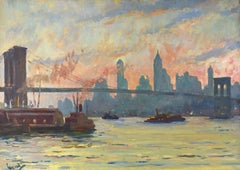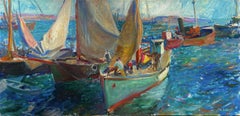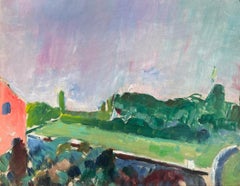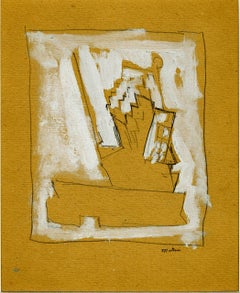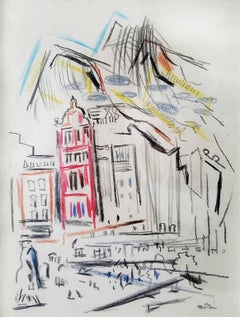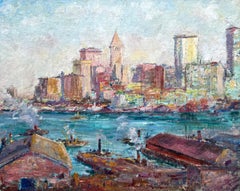Items Similar to Weehawken Sequence
Want more images or videos?
Request additional images or videos from the seller
1 of 2
John MarinWeehawken Sequencec. 1910-1916
c. 1910-1916
$110,000
£85,386.33
€96,855.08
CA$157,062.38
A$173,070.18
CHF 89,768.64
MX$2,058,436.91
NOK 1,135,547.59
SEK 1,063,767.30
DKK 723,361.93
About the Item
Weehawken Sequence, c. 1910-16
Oil on canvas board, 9 x 12 inches (22.9 x 30.5 cm)
Framed dimensions: 13 3/8 x 16 1/4 inches
John Marin’s long and prolific career is best marked by his fervent love of painting and abiding belief that art must relate to lived experiences. His best work strikes a delicate balance between abstraction and reality. His commitment to conveying the “realness” of a given subject through an abstract vocabulary of line, shape, color and texture is what defines his artistic singularity. Marin’s work never lost its vigor, even as he returned to the same themes and places over the course of his life. With each return he investigated a subject anew and applied his unflagging creativity and innovation to convey the full force of his experience and imagination.
Marin is one of those unique artists who would have been great whether he had any formal art training or not, as his passion for and commitment to his work was unflagging even as his health failed at the end of his life. His interest in drawing began when he was young, and he initially honed his skill in mechanical drawing at the Stevens Institute of Technology. He then worked as an architectural draftsman and even set up his own firm. Marin abandoned this pursuit by 1897, and by 1899 he had enrolled at the Pennsylvania Academy of the Fine Arts, where he would study until 1901. He probably did not spend a lot of time in class; in fact, he might have taken night courses, which would have allowed him to roam around Philadelphia for countless hours making sketches of the city—an exercise that would be lifelong. In 1900 he was awarded a prize at the Academy for his outdoor sketch.
Marin met Alfred Stieglitz in 1910. The relationship the two men would share until Stieglitz’s death in 1945 was formative for both. Stieglitz exhibited Marin’s work more than other of his artists except for Georgia O’Keeffe. His support of Marin’s career was crucial to the artist’s extraordinary productivity and enormous popularity with critics and collectors alike. The acclaim that Marin received during his lifetime surpassed all his contemporaries.
Marin was a rugged individualist; it informed his life and art. He developed a singular working method and artistic style that he consistently built upon throughout his career. Line was essential to his artistic practice, and drawing was as “natural as breathing.” Marin’s first experiments with abstraction took place in the 1910s, and even as his vocabulary became more abstract, he did not abandon his insistence on the primacy of nature. Unlike many of his peers, Marin never delved into pure abstraction and instead retained some recognizable imagery.
The Weehawkin Sequence, a series of oil paintings on small canvasboards, constitute some of John Marin’s most advanced and adventuresome paintings, and this painting is an exceptional example. The body of work was completed by 1916, making the paintings some of the most abstract and modern works by American artist created before the First World War. In them, The dynamic brushwork of this painting perfectly captures the staccato forms that make up the composition. Marin boldly experiments with form and color in an almost improvisational way. The composition bursts from the canvas, barely contained by its edges. This work is a tour de force of early American modernism that presages the more expressionist abstraction of the 1940s and beyond.
- Creator:John Marin (1870-1953, American)
- Creation Year:c. 1910-1916
- Dimensions:Height: 9 in (22.86 cm)Width: 12 in (30.48 cm)
- Medium:
- Movement & Style:
- Period:
- Condition:
- Gallery Location:Bryn Mawr, PA
- Reference Number:1stDibs: LU2773216776622
John Marin
John Marin was born in Rutherford, New Jersey in 1870. His father was a public accountant; his mother died nine days after his birth. He was taken to his maternal grandparents with whom he lived in Weehawken, New Jersey. His grandparents, with their son and two daughters were the only parents Marin was to know; it has been suggested that his father seems to have ignored him. As a child of seven or eight Marin began to sketch and when he was a teenager he had completed his earliest watercolors. His education in the schools of New Jersey was interspersed with summers of hunting, fishing and sketching; he traveled in the Catskills, and as far away as Wisconsin and Minnesota. But formal training was almost incidental to his development as an artist. He is to America what Paul Cezanne was to France - an innovator who helped to oppose the influence of the narrative painters, the illustrators who were more interested in subject than form, in surface than substance. Marin brought to his work a combination of values which, at the turn of the century, was unique in this country: an aliveness of touch, colors that have both sparkle and solidity, and forms that are vibrant with an energy characteristic of our age. Marin established himself as a practicing architect. In the early 1890s, he worked for four architects and by 1893 had designed six houses in Union Hill, New Jersey. At the age of twenty-eight, he decided to become a professional artist and studied briefly at the Pennsylvania Academy of Fine Arts in Philadelphia and the Art Students League in New York City. As a watercolorist he had no equal. He used this fluid, spontaneous medium to abstract from objects - skyscrapers, boats, mountains and seas - a simplified anatomy of color and form and to define the pulsation of stresses and movements in the relationship of objects. It was a great disappointment, all his life, that his oil paintings did not achieve the popularity that his watercolors did. From 1905 to 1910 he worked in Europe, where he was influenced by Whistler's watercolors. It was Alfred Stieglitz, Marin's lifetime friend and dealer, whose firm faith in his genius made his position in the art world possible. He developed a distinctive style that he used most characteristically in powerful watercolors of the Maine coast. During the 1920s he provided the dominant force in the movement away from naturalistic representation towards an art of expressive semi-abstraction. He married Marie Jane Hughes after he returned to New York. They had one son, who grew up to run his father's considerable affairs. Marin continued to work at the same steady fast pace as long as he lived. Since 1908 he had produced 1700 paintings, an average of forty a year. He had made the frames for them as well. At the age of seventy-nine, he began to taper off from the days when he painted one hundred watercolors in a summer. He died in 1953.
About the Seller
5.0
Recognized Seller
These prestigious sellers are industry leaders and represent the highest echelon for item quality and design.
Platinum Seller
Premium sellers with a 4.7+ rating and 24-hour response times
Established in 2001
1stDibs seller since 2024
6 sales on 1stDibs
Typical response time: 1 hour
- ShippingRetrieving quote...Shipping from: Bryn Mawr, PA
- Return Policy
More From This Seller
View AllMaples in Autumn Foliage
By John Marin
Located in Bryn Mawr, PA
Maples in Autumn Foliage, 1949
Watercolor on paper
19 1/4 x 14 1/2 inches (48.9 x 36.8 cm)
Framed dimensions: 21 5/8 x 26 1/2 inches
Signed and dated lower right: Marin 49
Provenanc...
Category
1940s American Modern Landscape Drawings and Watercolors
Materials
Paper, Watercolor
Manhattan Towers (East River)
By Edward Cucuel
Located in Bryn Mawr, PA
Signed lower left: Cucuel Signed and inscribed on verso: Cucuel / Manhattan Towers (East River)
Provenance
Private collection, Massachusetts
Born in San Francisco in 1875, Edward C...
Category
20th Century American Impressionist Landscape Paintings
Materials
Oil
Harbor View
By John Whorf
Located in Bryn Mawr, PA
Harbor View
Oil on canvas, 24 x 49 inches (61 x 124.5 cm)
Signed lower right: John Whorf
Provenance
The artist;
Collection of Ginger and Richard Beckwith, until 2021;
Private collec...
Category
Mid-20th Century Impressionist Landscape Paintings
Materials
Canvas, Oil
$85,000
French Scene at Voulangis
By Arthur Beecher Carles
Located in Bryn Mawr, PA
The Philadelphia modernist Arthur B. Carles was a brilliant colorist and an extraordinarily innovative painter. Though Carles trained initially at the Pennsylvania Academy of the Fin...
Category
1920s American Modern Landscape Paintings
Materials
Oil, Board
Landscape Sketch
By Hugh Henry Breckenridge
Located in Bryn Mawr, PA
Hugh Breckenridge’s artistic training began at the Pennsylvania Academy of the Fine Arts in 1887. The academic precision and attention to detail that mark his portraits and still lif...
Category
Early 20th Century Post-Impressionist Landscape Paintings
Materials
Oil, Board
New York Winter Scene
By Johann Berthelsen, 1883-1972
Located in Bryn Mawr, PA
Johann Berthelsen began his career as a professional singer. Graduating from the Chicago Musical College in 1905, Berthelsen toured the United States and Canada, performing in operas...
Category
Mid-20th Century Abstract Impressionist Landscape Paintings
Materials
Oil, Board
You May Also Like
Study for Mid-Manhattan II
By John Marin
Located in Fairlawn, OH
Study for Mid-Manhattan II
Oil and graphite on paper, mounted to board, 1932
Signed by the artist in pencil lower right
Sight size: 8 1/2 x 7 inches
One of a series of studies for th...
Category
1930s American Modern Abstract Paintings
Materials
Oil
Downtown, The El
By John Marin
Located in New York, NY
John Marin (1870-1953), Downtown, The El, etching, 1921, signed in pencil lower left (also signed and dated in the plate). Reference: Zigrosser 134, only state. Published initially by Alfred Stieglitz and then included as part of the Folio of American Etchings by the magazine The New Republic in 1924, in an edition of unknown size but probably above 500. In very good condition, the full sheet, on Van Gelder wove paper, 6 3/4 x 8 3/4, the sheet 11 x 13 3/4 inches.
Provenance: Hirschl and Adler Galleries, Inc., New York, New York.
A fine bright impression.
Initially the New Republic Set, sometimes known as Six American Etchings, contained Marin’s Brooklyn Bridge No. 6 (Swaying) (Zigrosser 112). But after a small number of sets were completed, Downtown the El was substituted for Zigrosser 112 (and so the number of Downtown The Els in the set would have been a bit fewer than the others in the set). Zigrosser, who apparently had not seen a complete set at the time he created the catalogue raisonne, conjectured that the substitution might have been because the original plate was damaged. But since the printer, Peter Platt, was the most renowned artist’s printer of his time, and worked alone, it is unlikely that he would have damaged the plate; a more likely possibility is that he switched to a print that was more comparable in size to the others in the set (The Brooklyn Bridge print...
Category
1920s Futurist Abstract Prints
Materials
Etching
New York Street Movement and Figure - Architecture
By John Marin
Located in Miami, FL
This work by John Marin depicts an image of lower Manhattan which was Marin's more iconic subject matter. The work has a stellar provenance as well.
Provenance:
Kennedy Galleries
Richard York Gallery
ACA Galleries...
Category
1920s American Modern Mixed Media
Materials
Crayon
“View of Lower New York from Brooklyn”
By Max Kuehne
Located in Southampton, NY
Original oil on linen painting laid down to original fiberboard by the well know American artist, Max Kuehne. Signed in pencil verso upper left. Circa 1928. Condition is very good. ...
Category
1920s Abstract Impressionist Landscape Paintings
Materials
Canvas, Oil, Fiberboard
Manhattan Island, Painting, Oil on Canvas
By John Kilduff
Located in Yardley, PA
Oil painting of an aerial view of Manhattan Island. :: Painting :: Impressionist :: This piece comes with an official certificate of authenticity signed by the artist :: Ready to Han...
Category
2010s Impressionist Paintings
Materials
Oil
'Hudson River' by Betsy Podlach - Contemporary Fauvist Landscape River Painting
By Betsy Podlach
Located in Carmel, CA
Betsy Podlach (American, born 1964)
"Hudson River" 2021
Oil Paint, Canvas, Stretcher Bars
The artist signed the back of the painting.
Betsy Podlach’s "Hudson River" is an expressive...
Category
2010s Fauvist Landscape Paintings
Materials
Canvas, Oil, Stretcher Bars
